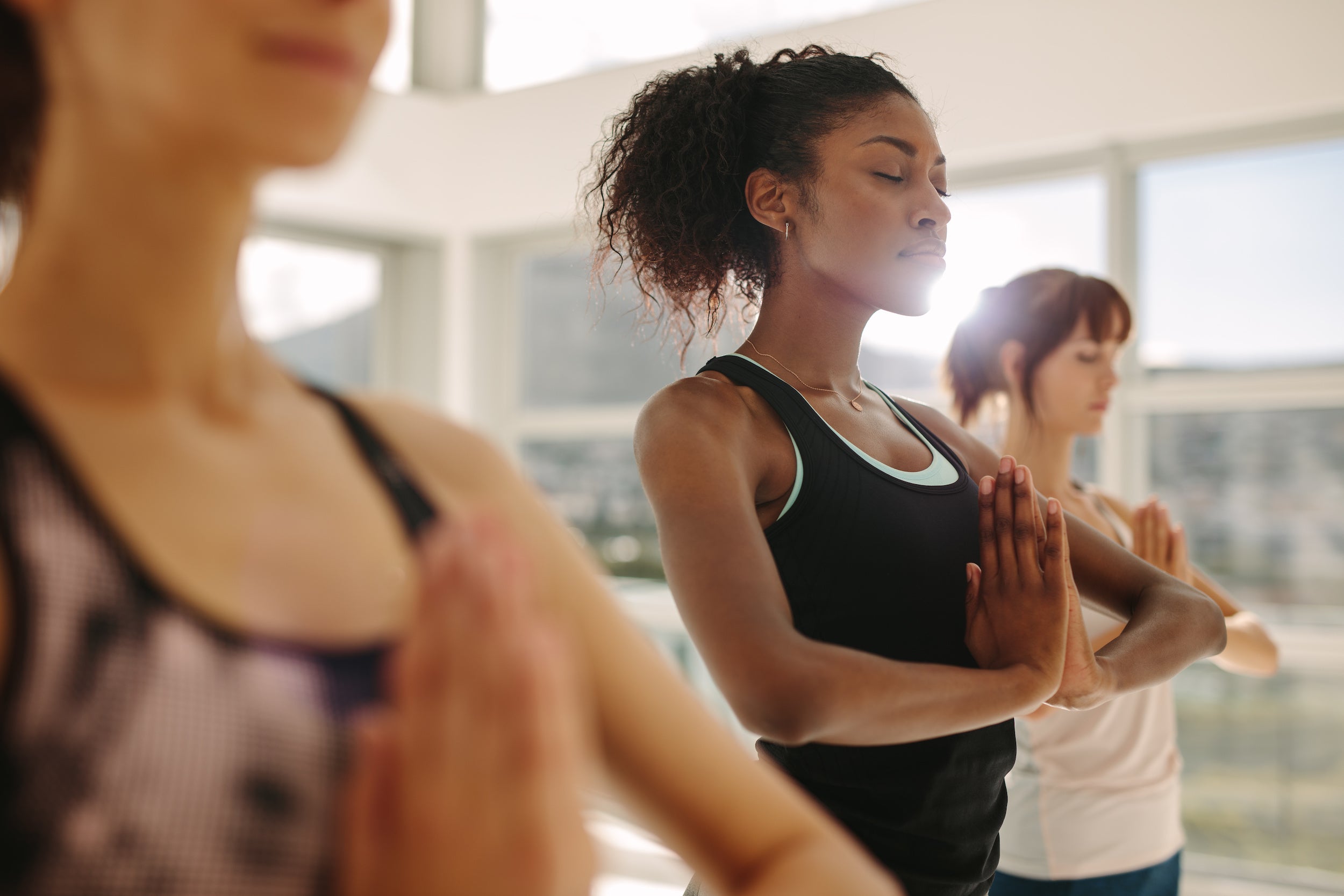
Pain can consume your life, debilitate the body and distract the mind. Studies have shown that practicing yoga for pain management can help people with arthritis, fibromyalgia, migraine, low back pain, and many other types of pain conditions. Aside from turning to yoga for pain relief, this practice strengthens the body and improves range of motion and flexibility.
Yoga may seem like the last thing you want to do when in pain, but read on to learn what the practice is, the benefits, and poses or asanas you can do to find relief from pain.
What is Yoga for Pain Management?

Yoga is a mind-body and exercise practice that combines breath control, meditation, and movements to stretch and strengthen muscles.
It originated in India over 5,000 years ago, and a typical session lasts from 45 to 90 minutes. However, practicing yoga for pain relief at home regularly for 10 to 20 minutes also offers benefits. A session starts with breathing exercises to relax the body and help free the mind of worries and distractions. It then proceeds with dynamic stretches and movements, ending in a final resting pose called savasana, a time to focus on your breathing and meditation.
When doing this exercise, it is advisable to listen to your body and modify the poses to accommodate your strength.
Benefits of Yoga For Pain Relief

Practicing yoga for pain management is very rewarding because of its numerous benefits, such as improvement in mobility and function, flexibility, full-body strength, and stress reduction. People who do yoga regularly may also develop a sense of self-discipline that can be useful both on and off the mat.
Apart from these health benefits, yoga can also alleviate pain and make it easier to manage. People with chronic pain like rheumatoid arthritis can reap the rewards of this exercise. Here is why it works:
- Yoga for pain relief reduces the perception of pain and improves the patient's ability to deal with it.
- It can help to reduce inflammation.
- Yoga improves flexibility and range of motion in joints, which can help ease pain.
- It is accessible for all fitness levels – you can sit comfortably in a chair and observe your breathing while doing simple movements.
Beginner Tips for Practicing Yoga

Yoga may be the last thing you want to do if you're experiencing pain, but if you want to give yoga for pain relief a try, keep in mind not to push your body further than what feels comfortable. Check out some tips from experts on how you can get started comfortably in your practice:
- Always talk to your doctor before starting a new fitness regimen, including yoga for pain management.
- Ask friends and family for recommendations for classes and yoga instructors, or search yoga classes you can stream at home.
- If you go to class, talk to the instructor beforehand to let them know your pain situation so they can help you make modifications if necessary.
Yoga Poses for Pain Relief

Yoga for Neck & Upper Body Pain - People spend a good chunk of their week hunched over a screen. Neck and upper body pain are becoming some of the most common ailments that people deal with.
Yoga instructor Pinpeta Gina shares via Instagram (@thesunfloweryogini) eight poses, such as puppy pose and half frog twist, to help relieve the tension in the neck and upper body area. Learn the proper techniques for yoga for pain relief for the neck and upper body.
Yoga for Sciatica Pain - Sciatica pain is a sharp or throbbing sensation that shoots from your lower back down your leg. Poses such as reclined pigeon and cross cat are advisable to relieve the pain. Follow this mini flow for sciatica pain by yoga instructor Hannah Barrett via Instagram (@hannahbarrettyoga).
Yoga for Rheumatoid Arthritis - Doing gentle yoga can help ease the discomfort of tender, swollen joints for people with arthritis. Hand and foot yoga, seated twist, shoulder and neck soother, and modified downward-facing dog are gentle yoga for pain relief poses that can help with rheumatoid arthritis pain. You can get started with these poses by following this guide.
Yoga for All Types of Pain - Diaphragmatic breathing can have a therapeutic effect on pain. Our breath has a major impact on our nervous system and mental state. In this guide, learn how you can properly do diaphragmatic breathing and other yoga for pain management poses.
Try Electrotherapy with Yoga for Pain Management

Doing yoga can help reduce pain, decrease inflammation, and improve mobility. After practicing, rest and recover by using an electrotherapy device like BioWaveGO. It’s a medication-free solution that uses electrical impulses to block pain signals for up to 24 hours after just one session.



Share:
How To Prevent and Treat Common Golf Injuries